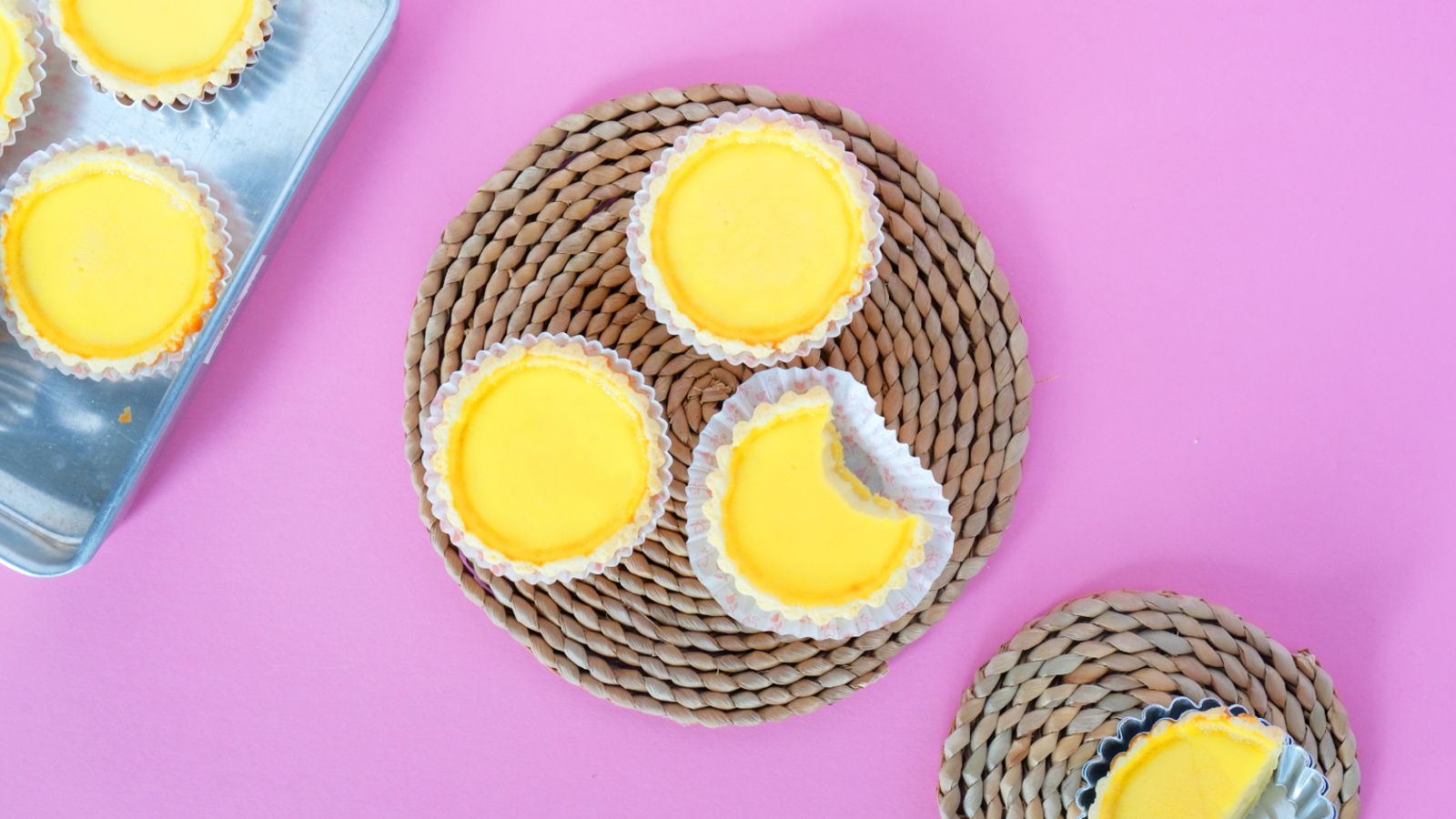Chinese egg tarts are a spin off from the popular Portuguese pastel de nata and has the influence of the English custard tarts. Combining the best of both worlds, these egg tarts have a crumbly pastry shell and a glossy soft custard filling. It's almost a creamy filling that melts in the mouth along with the buttery pastry. Mostly sold in bakeries and dim sum restaurants, these egg tarts are well loved in Malaysia, Singapore, Vietnam and Philippines.
Why is this the best Hong Kong egg tarts recipe?
Making egg tarts from scratch is not as tough as you think. This is my easy to-go recipe whenever I have cravings for egg tarts. It can be replicated without issues and is fool-proof without too many steps. Moreover, the ratio of the ingredients are measured to perfection.
Differences between Chinese and Portuguese egg tarts
Unlike pastel de nata which has caramelized spots on the filling, these Hong Kong-style egg tarts are smooth in appearance. It has a glossy smooth texture, spotless and the texture of the even filling is denser compared to nata.
As for the taste, the Portuguese tarts are sweeter as they use heavy cream which makes the filling milkier. The shell is crustier and not as airy as the Chinese tarts.
Can I use store-bought puff pastry?
The pastry is another reason that makes these egg tarts so special. You can use it if you are in a rush but it will not give the same flavour and texture like that of the Chinese pastry dough. This pastry dough is airy and not as oily as the Western pastry.
The secrets with the pastry dough
In this recipe, I used a mixture of all purpose flour and corn flour for a guaranteed crumbly and light consistency. Besides corn flour, you may substitute it with tapioca flour.
Mixing moisture (egg) with wheat flour will create the sticky and stretchy protein which is known as gluten. Kneading the dough would encourage the creation of gluten. To keep the pastry light, do not over mix the dough after adding the egg or it will turn into a chewy pastry.
Milk in egg tarts
These Chinese egg tarts are made without condensed milk or evaporated milk. With just fresh milk and custard powder, you will be able to recreate the signature creamy taste without an overpowering milk flavour.
How to get spotless and smooth surface?
Some prefer to use condensed milk because adding too much sugar to the egg mixture will not only make it too sweet but also creates the caramelized dark spots. In this recipe, the recommended amount of sugar is just nice and will not be too sweet. It is also a must to ensure that the sugar is fully dissolved before pouring the mixture into the pastry shells.
To guarantee a smooth surface, the egg tarts cannot be baked at high heat. I baked these tarts at 165 degrees Celsius but each oven differs a little. If the heat is too high, the egg custard will not be even as the mixture may expand (then deflates), cracks or burn during the baking process. Should that happens, reduce the temperature to 160 degrees Celsius the next time you bake them.
This brings me to the next point. That is to strain the egg mixture twice to remove any trapped bubbles. The air trapped in the bubbles will expand during the baking process and creates an uneven surface.
Lastly, rotate the tray midway into baking as some ovens may have more heat concentrated in one area. This is to ensure that the tarts are baked evenly.
Egg tart moulds
Moulds specially for making egg tarts are sold in specialty baking stores. These moulds have scallop edges which are synonymous in Chinese egg tarts. The mould which I used is 6.3 cm in diameter while its surface is 5 cm.
If you are unable to find any, bake the tarts in a muffin pan. Some parts of the dough might be pressed too much, making it too thin. This is noticeable when the dough is almost translucent, allowing you to see the colour of the pan. Press more dough on to these areas.
Keeping egg tarts fresh
Egg tarts can remain fresh if kept at room temperature for a maximum of two days. However, it is best to place them in a container and keep them refrigerated as they can be kept for up to 5 days if chilled.
How to reheat egg tarts?
Preheat oven at 180 degrees Celsius and heat up room temperature egg tarts for about 5-6 minutes. Avoid using the microwave to prevent the pastry from becoming dry.

